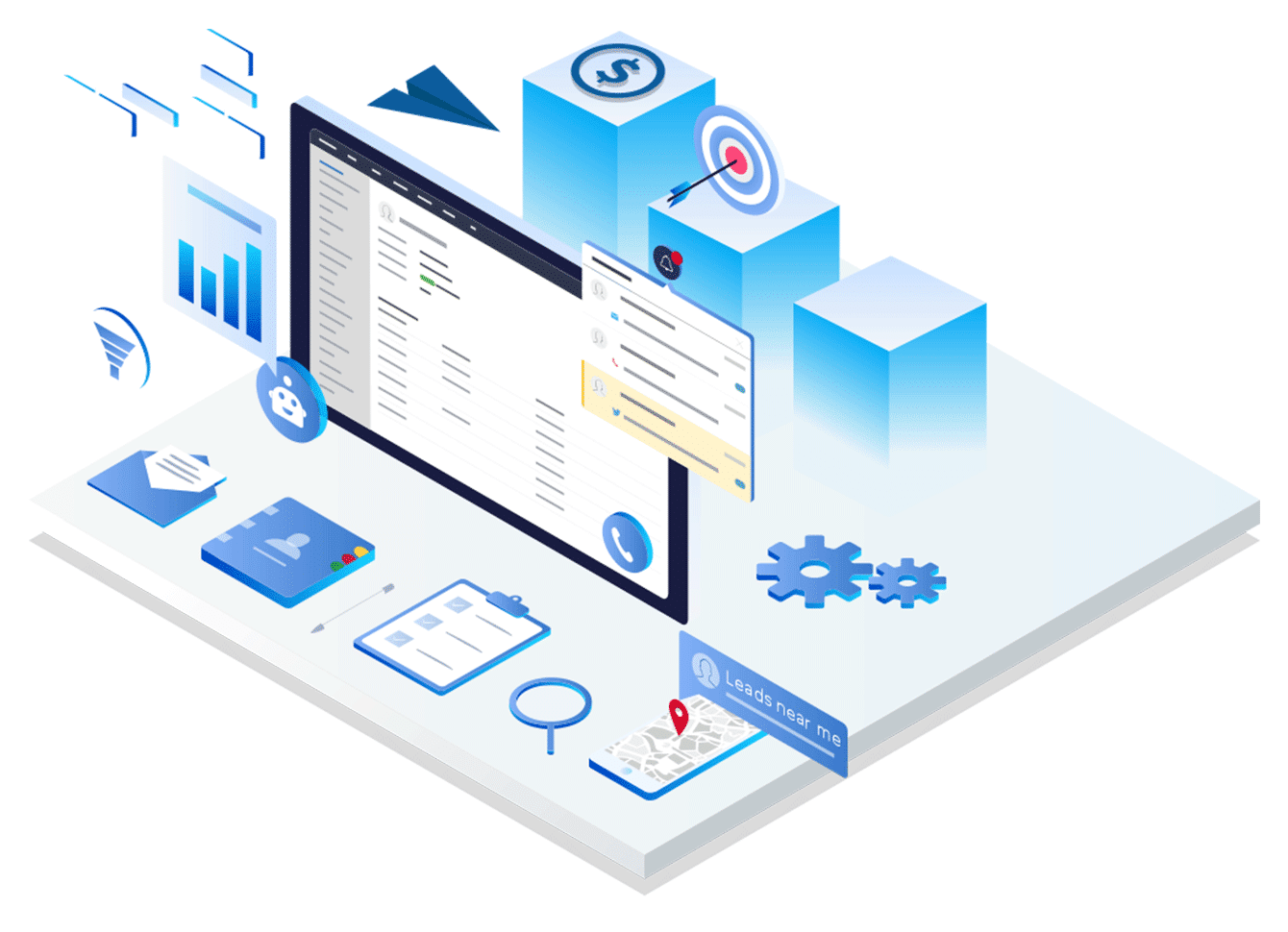A Customer Relationship Management (CRM) system is a must-have for any modern business. It can do whatever you need, from improving workers’ efficiency to controlling daily operations with the use of advanced AI. What’s even better, it can be upscaled almost endlessly, to meet the new requirements of your business.
Why are they so popular nowadays? Well, the answer is simple: the advantages such systems offer outweigh the price of developing custom CRM solutions or subscribing to an already available solution. For example, here are some of the most basic features most CRMs have:
- Data storing
- Customization
- Contact management
- Lead management
- Document-related operations
- Task management
- Workflow monitoring/control
- Statistical reports
But of course, these are only a few examples provided by common off-the-shelf solutions. Because the true potential of customer relationship systems can only be discovered through custom CRM solutions developed by services with years of market experience. Such companies offer you a perfect chance to obtain a unique piece of software that will be created with your requirements in mind.
Table of Contents
Types of CRM
To understand the usefulness of such programs better, let’s take a look at different types of them. These categories are based on the main purposes of these programs, providing you with a decent image of what they can be used for.
Operational
Operation is a pretty self-explaining name. Custom CRM software solutions that belong to this type, are made to simplify daily operations or to improve the performance of the employees. The main focus is to make every single process as simple as possible, with the use of automation or smart interface decisions.
For example, let’s take a look at spreadsheets. While working in almost any service, you need to write down all information required by the company into different data fields. And of course, it can take precious minutes to find what you need later, especially if you need to access data from a long time ago.
With a customer relationship management system, some data will be filled on its own, especially if the software is programmed to recognize regular customers. Moreover, manipulating information will be as easy as ever, because you, as a business owner, determine what the interface looks like, and where each function is located.
Collaborative
Most companies in the modern world are based on a collaboration between dozens of employees. That means each of them has different tasks, goals, and deadlines. Typically, all of these factors are determined and manipulated by managers, who are responsible for organizing the workflow in the most efficient way. Of course. That means that the managers need to contact most of the workers directly or create group chats in third-party services.
However, by using CRM, all the tasks can be assigned automatically to the categories or individuals chosen by the manager. What’s even better, is that you’re able to monitor the performance of whole departments in real-time. For huge corporations, that means that responsibilities can be assigned based on such factors as time zones, client categories, or skill groups.
Analytical
Analytical CRM systems are the ones that will suit the marketing team’s needs the most. These programs are created to work with huge piles of data. These pieces of software can analyze all the information, find particular tendencies based on the rules you set, and provide you with visualized reports.
Yet, not only the marketing departments can benefit from them, as analytics are a key part of any large company. Want to see what type of clients brings the most revenue? Done. Need to create a new trend but don’t know how to find the needed statistical data to make a prediction? The AI will do it for you.
Combining All 3
While these different types of customer relationship management software are really useful, the best idea is to combine their features to achieve what you need. Because only by analyzing your own requirements, and ordering solutions that will fit your particular company you will be able to maximize the usefulness of such programs.
Most Common Mistakes One Should Avoid
Now that we know what purposes different CRMs serve, and what their main features are, let’s look at the common mistakes that happen at different stages of the development. This will provide you with a good understanding of what choices to avoid, and what to focus your efforts on.
False Goals or Requirements
As said before, the key point of having a bespoke CRM system is to satisfy your business needs and improve the workflow. But to create a strategy that will allow getting these benefits, one needs to analyze their circumstances first. And that’s exactly where many companies fail.
Because the crucial part here is not only about finding potential spots for improvement, but also discovering the weak spots. Research every single department, its teams, and its employees. Find tendencies in the performance, and try to understand why some issues occur.
What’s even more important, is that you need to understand how a particular program can enhance the workflow. Of course, a consultation with the hired company will provide you with most of the answers, but you will still need to make many decisions. A good idea is to create a plan of how certain operations will be improved by software. Also, sometimes it’s possible to get a prototype system and try it out in the early stages.
Overcomplicated System
A program that does everything seems like a good idea. But in reality, it often happens that systems that are designed with too many features fail to comply with any basic requirements. That’s because instead of focusing on the key points and improving crucial operations, business owners want CRM solutions to do everything at once, which is impossible.
Saying that implementing many features in a single piece of software would be completely wrong. It’s still possible for a CRM program to help in many aspects. It’s just that you need to determine what the main purposes are, and what the priorities are. By selecting primary and secondary functions, you will allow developers to focus on what matters the most, providing you with the required quality.
Not Combining Different Features
Remember what we said about combining CRMs of different types? Because that’s one of the most critical points in the development process. Some business owners consider analytical tools to be “extra” and think they will benefit more from the lack of additional functions. And they are right, partially, as we described in the previous paragraph.
However, it’s never harmful to include at least the most basic tools for crucial processes. For example, it’s a good idea to implement analytical and statistical features, no matter the type of your company. This will constantly provide an understanding of how the business is doing, and when the issues arise. Also, it’s recommended to always have at least some kind of tool that allows for easy in-house communication.
Wrapping It Up
Developing custom CRM solutions isn’t an easy process, even if you’re a business owner. That’s because you still need to analyze your company’s situation, and the specifics of its workflow to be able to create a precise list of requirements. So, research as many aspects as you can, and try to find the balance between including too many or too few features in your perfect customer relationship management system. Good luck!










